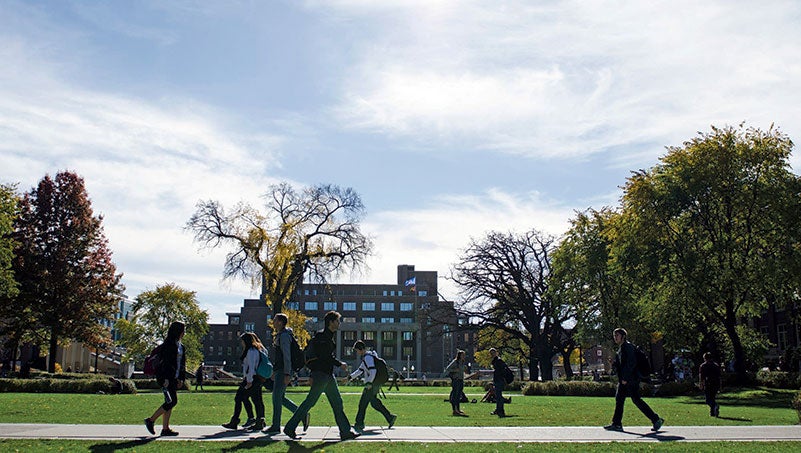This session, higher ed got less than requested, but also real money; Riverland among schools that will beneift from $2M for the Minnesota Reconnect Program
Published 7:50 am Thursday, May 23, 2019

- People walk across the University of Minnesota green on Nov. 1, 2016, in Minneapolis. Sam Harper for MPR News 2016
By Peter Cox
MPR News/90.1 FM
Funding for higher education was the only budget bill state lawmakers passed before the end of the session late Monday night.
For the state’s higher ed systems that means an end to the uncertainty over funding, and about $150 million in new money over the coming two years.
Of the $3.4 billion pie, about 80 percent of that is split between the Minnesota State Colleges and Universities system, which takes around $1.45 billion, and the University of Minnesota system, which gets around $1.35 billion. Much of the rest goes to the state office of higher education.
For the 2020-21 biennium, the $150 million increase was far less that what the systems and the state office requested.
Minnesota State, for example, asked for $246 million over the biennium. The bill that passed Monday delivers only a third of that.
“Given that the overall target for higher ed was $150 million and we are at about $81 million — I think given those realities we are pleased where we ended,” said Devinder Malhotra, the chancellor of Minnesota State.
The University of Minnesota took a different tack, asking for much less: $87 million.
“We received 50 percent of our ask, which is challenging,” said Matt Kramer, the vice president for university relations. “But at the same time, very good given the constraints we knew the state was going to be under.”
For both systems, inflation will consume some of the increased funding, but the funding will also go to different educational, student and community-focused programs.
Kramer said some of the new funds will go toward bolstering the University of Minnesota’s statewide Extension system, which serves a wide variety of community-focused functions — from helping farmers, to addressing the opioid crisis to having master gardeners on staff to advise Minnesotans on their vegetable or floral gardens.
At Minnesota State, $7 million will go toward workforce development scholarships, $1 million for workforce partnerships and $8 million to go toward a $37 million technology upgrade.
But Malhotra said tuition hikes are a possibility because lawmakers did not allocate money to keep the cost to students in check.
“We will be analyzing what the gap is, what the size and scope are, what the implication is and then we will have a conversation with our board — what other ways to make sure our resource base is needed, including conversation around the tuition,” he said.
Kramer said the University of Minnesota is also looking at tuition hikes.
The bill does help low- to moderate-income students with $18 million more going to a program of state tuition grants run by the State Office of Higher Education.
Dennis Olson, the higher education commissioner, said through that funding increase “3,348 new students become eligible to receive state grants. They’ll receive those state grants in addition to the 81,000 current grant recipients.”
Olson said there’s also $2 million for a program called Minnesota Reconnect that helps students who have some college credits, but haven’t graduated for one reason or another.
“This program really provides them financial assistance to address any financial holds they may have had, but also provide some scholarship opportunities,” he said. “But the key piece of it is really providing a dedicated adviser or navigator on campus, and this is specific to four two-year college campuses in the Minnesota State system, so we’re really excited about that investment as well.”
That includes Inver Hills Community College, Lake Superior College, Riverland Community College and South Central College.
The University of Minnesota’s Matt Kramer added that there is something nice for all those who work in higher education beyond the added funding — the timing of this bill.
“It’s pretty nice to know you don’t go into the special session now,” he said. “We’re wrapped up for this biennium.”




